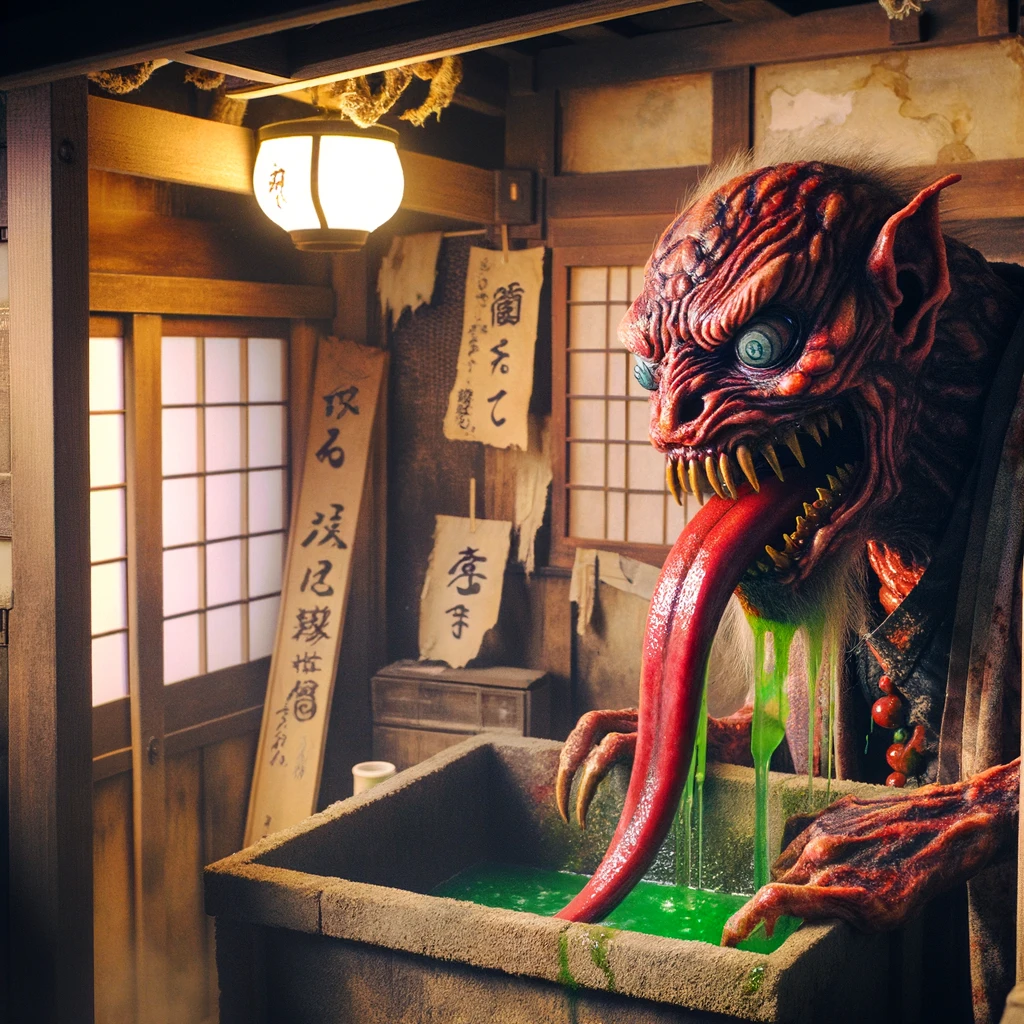The Akaname, a figure from Japanese folklore, is a unique yokai (a class of supernatural monsters, spirits, and demons in Japanese culture) known for its peculiar habit and appearance. The name “Akaname” can be translated to “filth licker,” which aptly describes its primary characteristic and the role it plays within the rich tapestry of Japanese myth.
Description and Characteristics
The Akaname is depicted as a demon or spirit with a long, protruding tongue, which it uses to lick up the filth and grime in unclean bathrooms and untidy homes. Often portrayed with a grotesque appearance, including slimy skin that may be red or green, the Akaname embodies the consequences of neglecting cleanliness. Despite its unsettling appearance and habits, the Akaname is not typically considered dangerous or malevolent; instead, its presence serves as a reminder of the importance of personal hygiene and the cleanliness of one’s surroundings.
In Japanese folklore, the Akaname is one of many yokai that personify aspects of everyday life, natural phenomena, or human behaviors. The story of the Akaname, in particular, emphasizes traditional Japanese values around cleanliness and the belief that neglecting such duties can invite unwanted, impure entities into one’s home. This yokai is often invoked in stories told to encourage children and adults alike to maintain cleanliness and avoid the accumulation of dirt and grime, lest they attract the attention of the Akaname.
Sightings
Given the mythical and folklore-based nature of the Akaname, a creature from Japanese mythology known for its role as a filth licker in neglected bathrooms and unclean areas, there are no documented sightings in the literal sense. The Akaname, like many yokai, exists more in the realm of cultural stories, moral lessons, and mythological teachings rather than in physical reality where empirical sightings might be recorded.

Encounters with the Akaname are described through tales and folklore narratives rather than eyewitness accounts. These stories often serve to impart lessons on cleanliness and the importance of maintaining a hygienic environment to avoid attracting such undesirable yokai.
In contemporary culture, the Akaname continues to be referenced in literature, manga, anime, and other forms of media as a symbol of the consequences of neglecting cleanliness. While these modern references can be seen as the “sightings” of the Akaname in today’s world, they are more about keeping the myth alive and relevant rather than reporting actual encounters with a mythical being.
In essence, the “sightings” of the Akaname are confined to the imaginative and moral landscape of Japanese folklore, serving as reminders of cultural values and the intricate relationship between humans and the supernatural world of yokai.
Modern Interpretations
In contemporary culture, the Akaname has found its way into various forms of media, including manga, anime, and literature, often portrayed with a blend of humor and horror. These modern adaptations play with the traditional image of the Akaname, sometimes expanding its role beyond that of a mere filth licker to explore deeper themes of pollution, neglect, and the unseen consequences of modern living.
Despite its specific association with licking filth, the Akaname’s enduring presence in Japanese culture speaks to the broader human fascination with the supernatural and the ways in which folklore reflects and reinforces societal values and norms. The Akaname, with its unique niche among the yokai, continues to captivate the imagination, serving as a peculiar yet poignant symbol of the importance of cleanliness and the eerie charm of Japanese folklore.


















